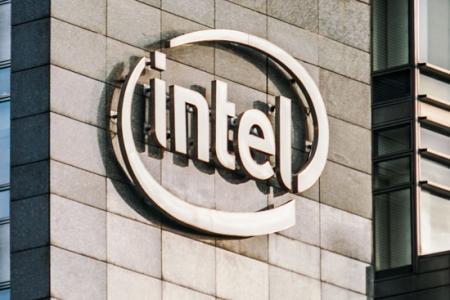your current location is:Home > Finance > depthHomedepth
Disney wins Netflix, loses China
Beijing time, Disney released its financial results for the third quarter of 2022, which ended on July 2. In the last fiscal quarter, Disney’s revenue was $21.5 billion, an increase of 26%, higher than market expectations of $20.9 billion; net profit before tax was $2.119 billion, an increase of more than 100% year-on-year; operating net profit increased by 53% year-on-year to $1.409 billion .
Among them, the theme park, experience and product sectors achieved outstanding results, with revenue reaching US$7.394 billion, a substantial increase of 70%. Another main business, media and entertainment distribution, contributed $14.11 billion, but the year-on-year growth rate was only 11%.
During the reporting period, Disney’s pre-tax operating profit was US$2.119 billion, a year-on-year increase of more than 100%; operating net profit increased by 53% year-on-year to US$1.409 billion; diluted earnings per share were 77 cents, a year-on-year increase of 54%.
It is worth noting that Disney's streaming matrix has more subscribers than Netflix (Netflix).
According to the financial report, Disney’s streaming media Disney+ subscribers increased by 14.4 million, exceeding the 10 million expected by analysts, and the cumulative number of Disney+ subscribers was 152 million. Add Hulu and ESPN+, and Disney has 221.1 million streaming subscribers, surpassing Netflix's 220.7 million.
But under the gratifying results, there are also hidden worries. The Disney Streaming Matrix lost a combined $1.1 billion, and average revenue per customer in North America also fell 5% in the quarter, largely because users tended to opt for cheaper products.
Similar to Netflix and Aiyouteng, when Disney faced the huge losses caused by long videos, the first thing that came to mind was the increase in membership fees. The company announced that it will increase the price of Disney+ subscriptions from December this year. The subscription price of Disney+ with ads will rise to $7.99 per month; the ad-free version will increase by 38% to $10.99.
In addition, Disney+, Hulu, ESPN+ bundled subscription packages will also increase in price: the subscription package with ads will rise to $12.99 per month, and the ad-free version will rise to $14.99 per month.
After the earnings report, Disney shares rose nearly 7% in after-hours trading, returning to above $120. But it is still down more than a third from its 52-week high of $187.58.
In fact, from April to July, Disney did not go smoothly, but went through an "eventful summer". Under the dazzling achievements, Disney may not have immediate worries, but it has far-reaching concerns. Especially in the Chinese market, Disney is facing unprecedented challenges.
A
In the past few quarters, Disney has encountered many variables in China.
Disney's film and television distribution in mainland China continued to be blocked , and many popular new films failed to land, including Marvel's "Doctor Strange 2: The Multiverse of Madness", "Thor 4: Love and Thunder", and Pixar's animation "Light Years". "Wait.
China will become the world's largest ticket warehouse in 2021, and the Marvel series is also very popular in China. Not being able to enter mainland China is a big loss for Disney's movie box office.
Take "Avengers: Endgame", which landed in China in 2019, as an example, with a global box office of 2.797 billion US dollars, which was the top box office of Disney movies that year. The Chinese market contributed 22%, and North America contributed 30%.
The release of Disney films in China has been blocked for some time. Earlier, at the second-quarter earnings conference, Disney CEO Chapek also specifically reassured him: We are very confident that even if there is no release in China, it will not affect Disney's success.
From this perspective, the movie box office does not account for a large proportion of Disney's total revenue. From this perspective, it is true. In the second quarter when Chapek made the remarks, for example, the content sales and licensing segment accounted for about 11% of Disney's total revenue, including movie box office revenue, home entertainment DVD distribution, music distribution, IP licensing, etc.
Unsuccessful film releases in China will certainly cost Disney some revenue, but the impact on the entire Disney empire will be limited. But that's not Disney's only trouble in China this summer.
Almost all of Shanghai Disneyland was closed last fiscal quarter. Due to the epidemic, Shanghai Disneyland has been closed since March 21 and will not reopen until June 30. Hong Kong Disneyland closed earlier than Shanghai, and finally reopened on April 21 after 104 days.
Shanghai Disneyland covers an area of 1.16 square kilometers, which is three times that of Hong Kong Disneyland and ranks third among the six Disneyland parks in the world. According to a report released by the Global Themed Entertainment Association (TEA), Shanghai Disneyland has become the world's second most visited theme park in 2020 with 5.5 million visitors.
In addition to the closure of the park and the suspension of ticket revenue, human input and maintenance costs continue to be spent. When the 2020 outbreak shut down multiple Disney parks around the world, Disney had said that if the Hong Kong and Shanghai parks remained closed for two months, it could cost the company $175 million in lost operating income.
The repeated opening and closing of China's Disney theme parks is a worse challenge for Disney than blocked movie releases. Although the overall performance of Disney's global theme parks in the third quarter set a new record, this is probably related to the cancellation of epidemic prevention measures in many parts of the world and the resumption of cross-border tourism. Can Disneyland keep the momentum going?
B
Another bright spot for Disney this quarter was the increase in streaming subscribers.
In the three months ended July 2, Disney's streaming platform Disney+ added a total of 14.4 million subscribers, higher than the 10 million expected by analysts, and a total of more than 150 million. The entire Disney streaming media matrix adds up to more than 220 million subscribers, which has already squeezed out Netflix and is the number one streaming media subscriber.
Under the "background" of Netflix, the user growth of Disney's streaming media is even more dazzling. Previously, Netflix announced its second-quarter earnings report. The number of subscribers in the second quarter decreased by 1 million, which was the first time in the company's history that it lost users for two consecutive quarters.
Disney CEO Chapek announced at the end of 2020 that by September 2024, it plans to have Disney+ subscribers reaching 230 million to 260 million; direct-to-consumer businesses including Hulu and ESPN+ will also be profitable by then.
However, behind the dazzling results, Disney streaming also has troubles this summer.
On the one hand, in June this year, Disney failed to renew the streaming rights of the Indian Cricket Premier League.
Disney offered a five-year price of $6.2 billion, and the average royalties per game during the contract period were as high as $15 million, more expensive than the Premier League. But in the end, Disney only got the TV rights, and the streaming rights were snatched up by Viacom 18, the media joint venture of India's richest man Ambani.
According to statistics, more than one-third of the 137.7 million Disney+ subscribers currently live in India. Losing the rights to this crucial event would make Disney+ less attractive in the Indian market.
Disney has voluntarily lowered its growth forecast: Disney+ subscribers in fiscal 2024 are expected to be 215 million to 245 million, lower than the previously planned 230 million to 260 million.
On the other hand, Disney also faces competition from Amazon.
At the end of March this year, Amazon acquired MGM, a veteran Hollywood filmmaker, for $8.5 billion, becoming the last acquisition announced by Bezos before he stepped down as Amazon’s CEO. Amazon's acquisition of MGM is a direct threat to Disney's content dominance.
As one of the eight major Hollywood studios, MGM owns more than 4,000 films, 17,000 TV series, and has won 180 Oscars and 100 Emmys, with rich content assets. Netflix, Apple, and NBC Universal have all had acquisition intentions one after another. Amazon’s bid was successful, and the final purchase price was 60% higher than MGM’s market value.
Compared with Netflix’s 2007 launch of its streaming service and Amazon’s launch of Prime Video in 2017, Disney’s entry was late, but the momentum was strong. On November 13, 2019, Disney+ gained 1,000 registered users on the first day of its launch, and the number of users has been increasing since then.
Amazon has been investing in content over the past few years in an effort to increase its competitiveness in the streaming industry, spending $13 billion on video and music content in 2021, an increase of 18%. The acquisition of MGM can give Amazon the confidence to challenge traditional film and television giants.
According to Nielsen data, as of July 2021, Netflix, YouTube and Hulu accounted for 7%, 6% and 3% of the U.S. streaming market, respectively, while Amazon’s Prime Video and Disney’s Disney+ together accounted for 2%. Among them, Hulu is also a member of Disney's streaming media matrix.
Disney relies mainly on rich content. In addition to Disney itself, Disney also has companies with many IPs, such as Marvel, Fox, Pixar, and Lucas, with rich and diverse content resources. On the first day of Disney+'s launch, in addition to the popular IP Marvel series and its derivative dramas, there are also classic dramas such as "The Simpsons", and new dramas include "The Mandalorian" and the drama version of "High School Musical", etc. A total of about 5,000 episodes + about 100 live-action and animated movies, etc.
Now, Amazon's acquisition of MGM is bound to pose a new challenge to Disney's content advantage.
C
In the race for the streaming market, Disney also faces a foray from Apple.
Disney's sports TV brand ESPN has been seeing declining cable subscriptions, from 100 million to 77 million between 2011 and 2021. And its corresponding streaming service ESPN+, one of the troikas of Disney streaming, now has an ambitious and cash-rich competitor.
On the same day that Disney lost the Indian Cricket Premier League, Apple announced a 10-year, $2.5 billion deal with the Major League Soccer (MLS) worldwide, and its streaming platform Apple+ will receive exclusive MLS streaming for the 2023-2032 season. Copyright of live media.
Disney is also responding aggressively.
For the Chinese market, Disney CEO Chapek's statement "success without the Chinese market" made many people unhappy, but he also said that in the Chinese market, the Disney brand has a huge fan base and a long-term record of success, and the future will also be Films will continue to be submitted for distribution in the Chinese market.
In addition to the three-month reopening of Shanghai Disneyland, its official flagship store landed on Tmall in August. For a long time, there has been a "Disneyland purchasing agent" business in China, and the demand already exists. This move can supplement the offline business by selling peripheral products online.
On the streaming media side, Disney has also used the classic two-piece “price increase” and “advertising”. However, Netflix's ad-supported low-cost subscription option has also been put on the agenda, after Netflix and Microsoft reached a cooperation and said on the second-quarter earnings call in July that the ad-supported plan will be launched in early 2023. Changes in pricing by competitors may also adversely affect Disney's streaming pricing adjustments.
Competition is dynamic competition. In the future, Disney still needs to face many challenges in order to continue to deliver beautiful financial reports to the market like this quarter.
Previous:Tiffany also came to "grab money": NFT limited necklace of 340,000 pieces was robbed in 20 minutes
Next:This is the most profitable market in the world, and it is also the most closed market
related articles
Article Comments (0)
- This article has not received comments yet, hurry up and grab the first frame~













